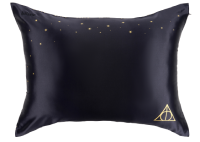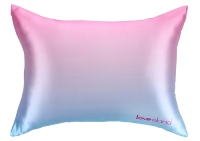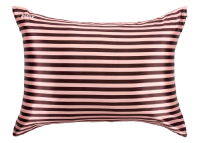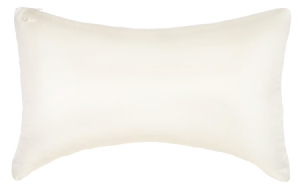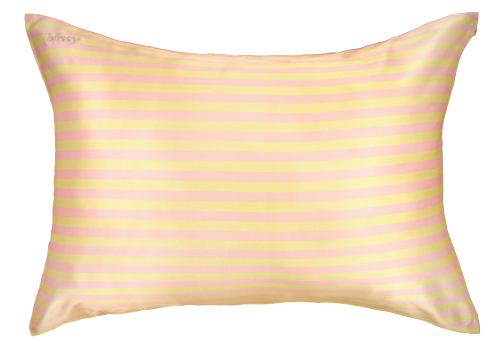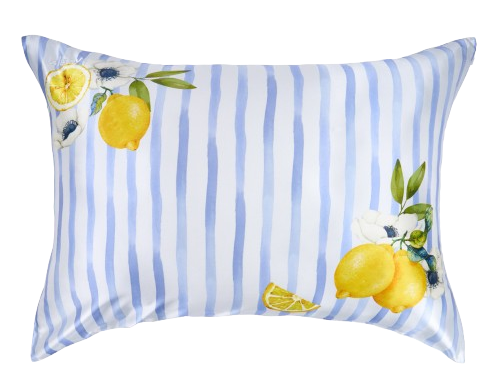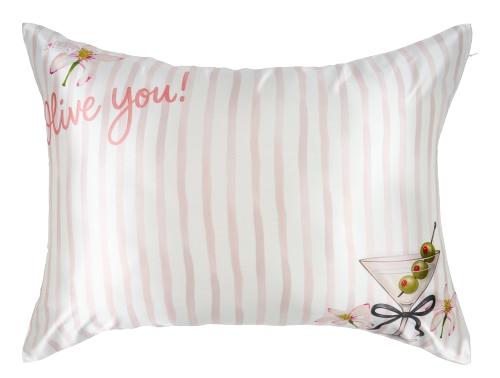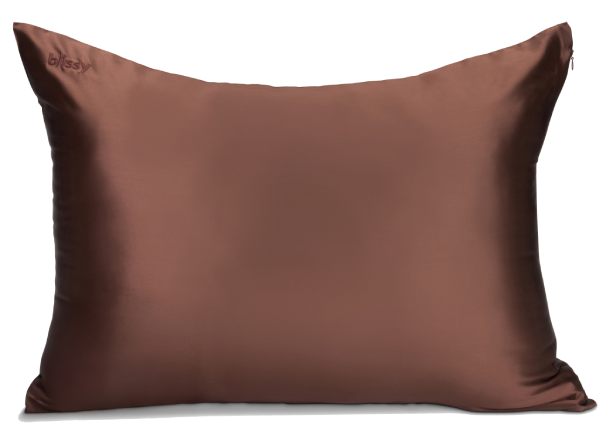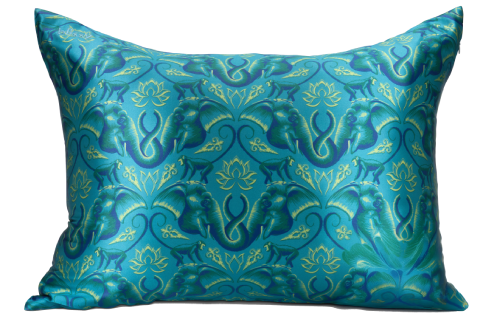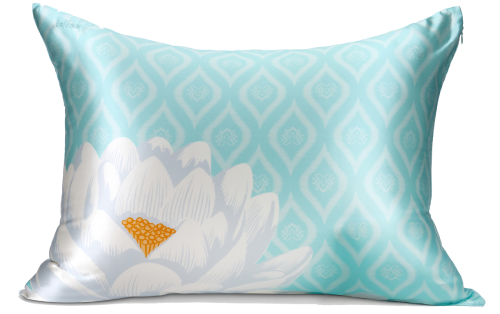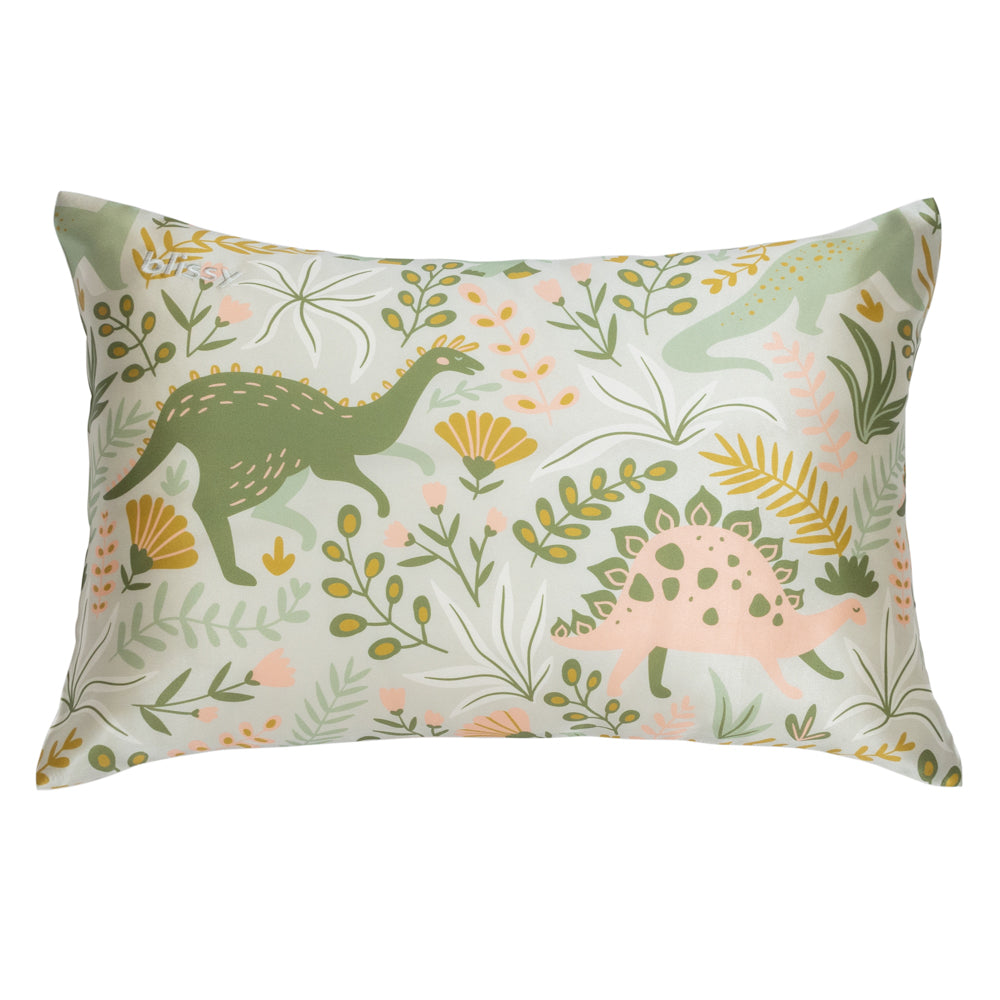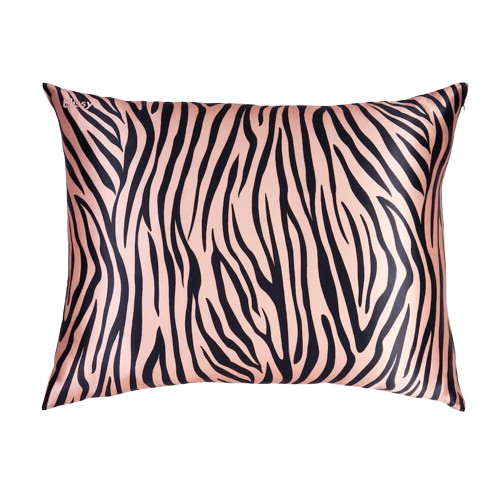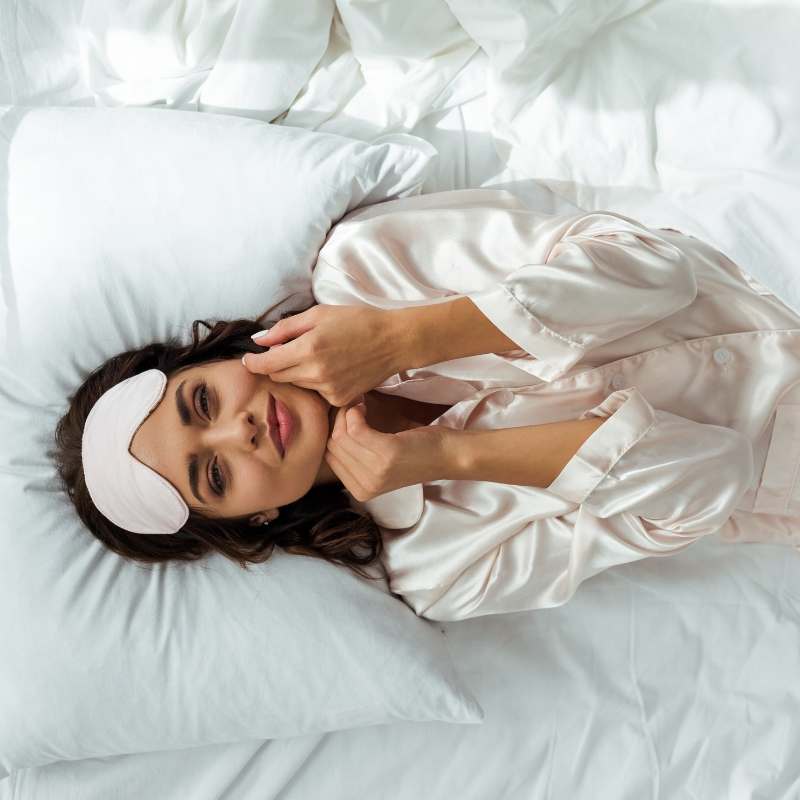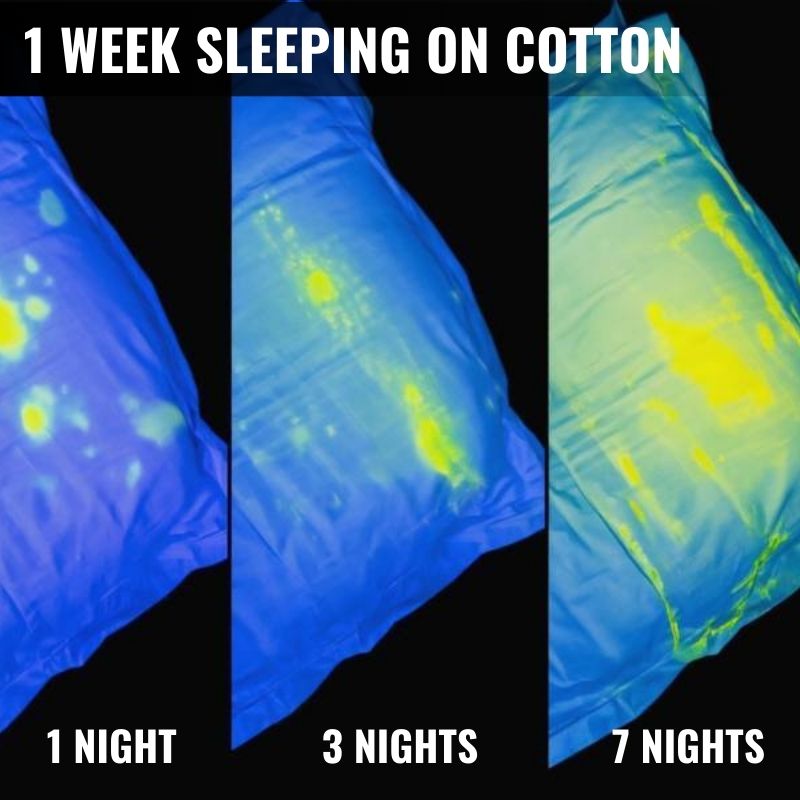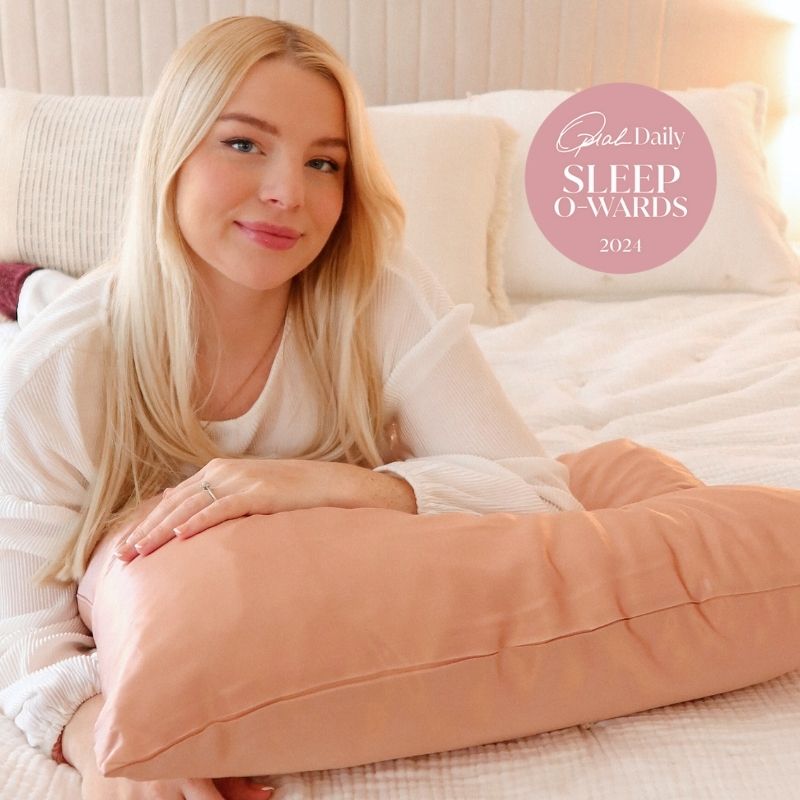Key Takeaways:
-
Synthetic satin from polyester or rayon isn't breathable and traps heat.
-
Real silk satin offers natural breathability, moisture-wicking, and temperature regulation.
-
Silk bedding like Blissy Silk Pillowcases supports skin and hair health.
-
For cooler, comfortable sleep, skip synthetic satin and choose pure silk instead.
Why Your Bedding Fabric Choice Matters
If you've ever woken up sweaty, uncomfortable, or with creased skin after a night on satin sheets, you're not alone. Many people assume that satin fabric is luxurious, smooth, and perfect for sleep—but the reality is far less glamorous when that satin is synthetic.
Is satin breathable? The short answer: not really. Most products marketed as satin bedding are made from synthetic fabrics like polyester or rayon. While the glossy surface might appear luxurious at first glance, synthetic satin lacks the breathability, hypoallergenic and moisture-wicking properties, temperature regulation, and softness that natural fibers provide.
In this guide, we'll break down what satin really is, why synthetic satin falls short, and why real silk—like the kind used in Blissy Silk Pillowcases—offers a superior alternative for anyone serious about sleep quality.
What Is Satin Fabric?

Satin isn't a type of fiber—it's a weaving technique. The satin weave is characterized by floating warp yarns that pass over multiple weft threads, creating a smooth, glossy surface on one side and a duller finish on the other.
However, when you see satin fabric for sale—whether it's satin sheets, satin clothes, or satin bedding—it's almost always made from synthetic material:
-
Polyester (the most common synthetic fiber)
-
Nylon (another petroleum-based synthetic)
-
Rayon (semi-synthetic, chemically processed cellulose)
These man-made fibers are woven using the satin technique to mimic the look of silk, but they lack the natural benefits that make silk exceptional. When products are marketed simply as "satin" without the word "silk," you can safely assume they're synthetic.
True silk satin is almost always marketed explicitly as "silk" or "silk satin," never just "satin."
The Problem With Synthetic Satin Bedding

Most satin fabric available today is made from polyester or other synthetic fibers. While these materials are affordable, they come with significant drawbacks:
Poor Breathability
Synthetic satin doesn't allow air to circulate effectively. Polyester, nylon, and rayon create a barrier that traps heat against your body, making it difficult to stay cool—especially problematic in hot weather.
Moisture Trapping
Unlike natural fabric that wicks moisture away, synthetic fabrics have low absorbency. When you sweat during sleep, that moisture stays on your skin, creating discomfort and potentially contributing to breakouts—especially for those with sensitive skin.
No Temperature Regulation
Synthetic satin can't regulate body temperature the way natural fibers can. It tends to feel hot in summer and cold in winter, failing to adapt to your body's needs.
Chemical Treatments
Many synthetic materials are treated with harmful chemicals during production, which can cause skin reactions and allergic responses. They're also bad for the enviornment.
Types of Satin Material: What's Really in Your Bedding

Polyester Satin
The most common type, polyester is affordable but the least breathable option. It can feel clammy against the skin, especially in hot weather.
Rayon Satin
Rayon satin is slightly more breathable than polyester but still doesn't offer the temperature-regulating properties of natural fabric like silk.
Nylon Satin
Similar to polyester—smooth and shiny but not breathable. Commonly used in formal wear like wedding dresses and prom dresses but not ideal for bedding products.
How Breathable Is Satin Fabric, Really?

Is satin breathable? Here's the honest breakdown:
-
Polyester satin: Poor breathability—traps heat, doesn't absorb moisture
-
Rayon satin: Slightly better than polyester but still falls short
-
Nylon satin: Similar to polyester—not breathable
-
Real silk: Highly breathable, naturally moisture-wicking, and temperature-regulating
If breathability is a priority, avoiding synthetic satin entirely is the smart move.
Satin and Silk: Understanding the Key Difference
The critical comparison comes down to synthetic versus natural:
Synthetic Satin:
-
Traps heat and moisture
-
Lacks natural breathability
-
Can irritate sensitive skin
-
No real benefits for skin or hair
Real Silk:
-
Naturally breathable and moisture-wicking
-
Regulates temperature year-round
-
Naturally hypoallergenic and gentle
-
Clinically proven skin and hair benefits
Silk is a natural fiber produced by the Bombyx mori silkworm. It's protein-based, hypoallergenic, and moisture-wicking. Silk bed sheets and silk bedding keep sleepers comfortable without trapping heat—something synthetic satin simply cannot do.
Why Blissy Silk Pillowcases Are the Superior Choice
If you're tired of waking up hot and uncomfortable from synthetic satin bedding, it's time to switch to Blissy Silk Pillowcases.
Clinically Proven Benefits
Blissy pillowcases are made from 100% pure mulberry silk—the highest quality natural fiber available. They're clinically tested and shown to:
-
92% of participants felt their skin was more hydrated
-
Reduce frizz and hair breakage significantly
-
Stay cool and breathable all night long
-
Support sensitive skin with naturally hypoallergenic properties
Dermatologist-Recommended
Unlike synthetic satin, which can irritate skin and trap heat, Blissy silk is dermatologist-recommended for its gentle, non-irritating surface that preserves your skin's natural moisture.
Temperature Regulation That Actually Works
Silk is a natural temperature regulator. It keeps you cool in summer and warm in winter—something synthetic satin simply can't do. The breathable structure allows air circulation while wicking moisture away.
Featured & Award-Winning
Featured in Oprah Daily, Good Housekeeping (Best in Lab 2024), Vogue, and Forbes, Blissy offers benefits that synthetic fabrics can't provide:
-
Reduces sleep creases and fine lines
-
Prevents hair breakage and frizz
-
Preserves your skincare products
-
Stays cool and comfortable through the night
Synthetic Satin vs. Other Fabrics
Satin vs. Cotton
Cotton is breathable and absorbent but can feel rough and cause friction. Silk sheets offer better balance—smoothness without the breathability problems of synthetic fabrics.
Satin vs. Silk
Satin (typical market products) means synthetic material woven with the satin technique. Silk means natural fiber—often woven with the satin technique but marketed as "silk."
Real silk delivers breathability, temperature regulation, and skin benefits that synthetic satin cannot match.
Further Reading:
Is Satin Good for Hot Weather?
Synthetic satin is not ideal for hot weather. Satin fabric made from polyester or rayon traps heat and prevents airflow, leaving you sweaty and uncomfortable during warm nights.
Pure silk, however, is completely different—with built-in temperature regulation that stays cool in summer and warm in winter.
The Best Uses for Satin Fabric

Synthetic satin works well for:
Evening Gowns and Formal Wear
Satin clothes, wedding dresses, bridal gowns, and prom dresses benefit from the elegant appearance. These garments are worn for just a few hours, so breathability isn't as critical.
Home Decor
Satin material works for decorative purposes like curtains and decorative pillows where appearance matters more than breathability. However, for bedding products where you spend 7-9 hours every night, silk bedding is the smarter choice.
Caring for Satin Fabric
If you own satin bedding or satin clothes:
-
Use cool water and a gentle cycle for machine washing
-
Avoid hot water which can damage synthetic fibers
-
Air dry when possible; avoid high heat
-
Avoid direct sunlight to prevent fading
For silk bedding, follow care instructions carefully. Blissy pillowcases are machine washable for easy care while maintaining their lustrous appearance.
Is Satin Breathable? The Bottom Line
Is satin breathable? Not when it's made from synthetic fabrics like polyester, nylon, or rayon—which is what most products marketed as "satin" actually contain.
If you want smooth, luxurious comfort without sacrificing breathability or skin health, skip the synthetic satin and invest in real silk. Blissy Silk Pillowcases offer clinically proven, dermatologist-recommended products that help you sleep cooler, wake up refreshed, and protect your skin and hair—all night, every night.
Upgrade Your Sleep With Blissy Silk Pillowcases
Ready to experience the difference real silk makes? Say goodbye to sweaty, uncomfortable nights on synthetic satin and hello to the breathable, cooling comfort of Blissy Silk Pillowcases.
With over 230,000 5-star reviews, features in Good Housekeeping, Oprah Daily, Vogue, and Forbes, plus endorsements from dermatologists, Blissy is the trusted choice for better sleep and healthier skin.
Shop Blissy Silk Pillowcases today and discover why real silk beats synthetic satin every time.


